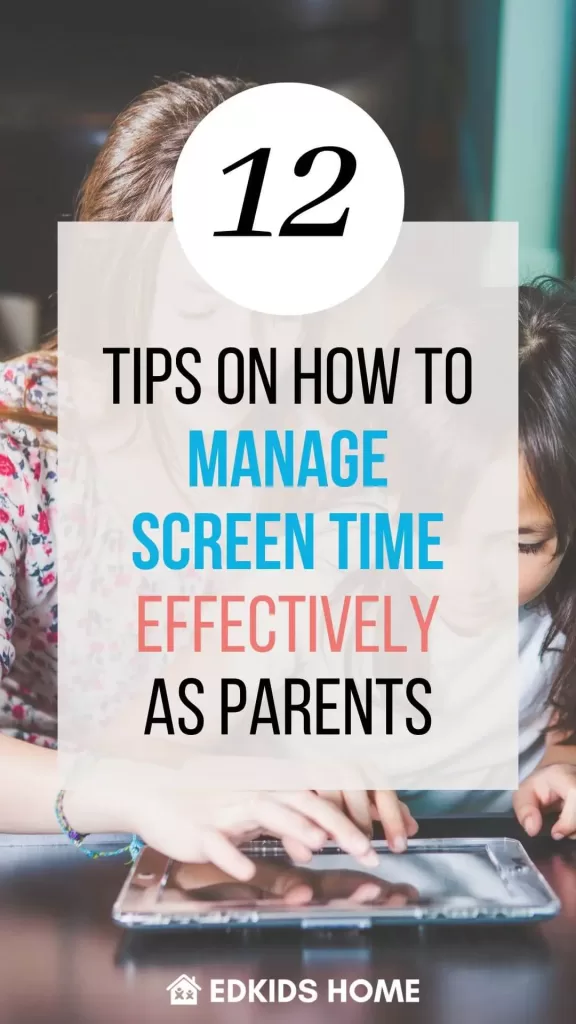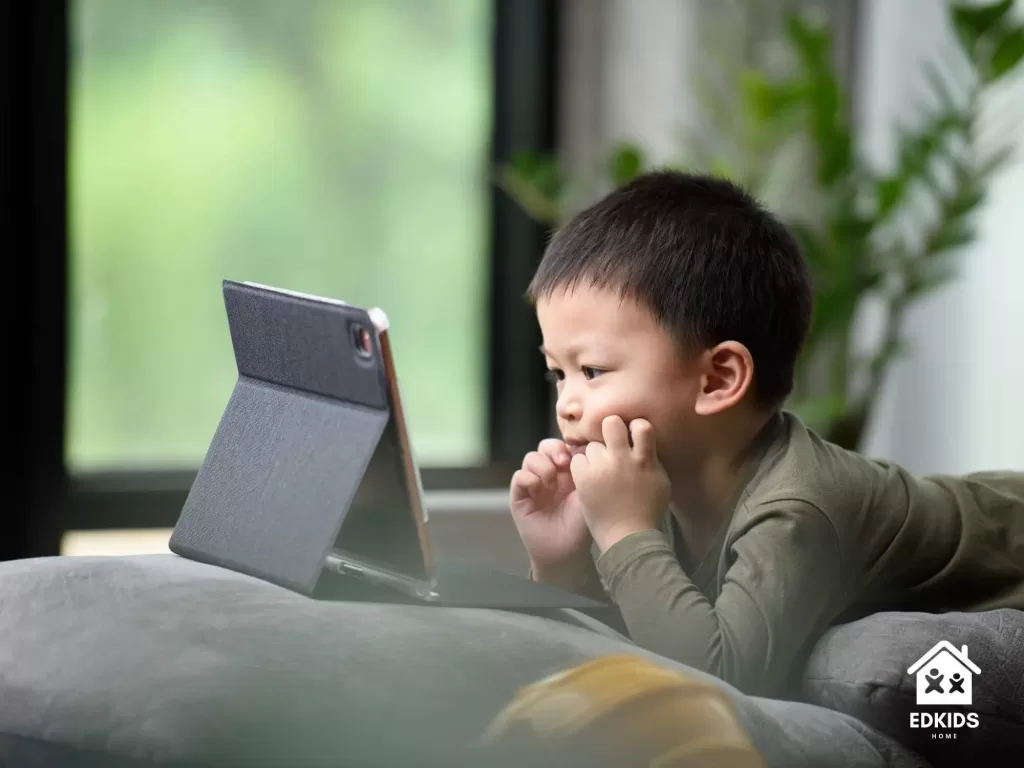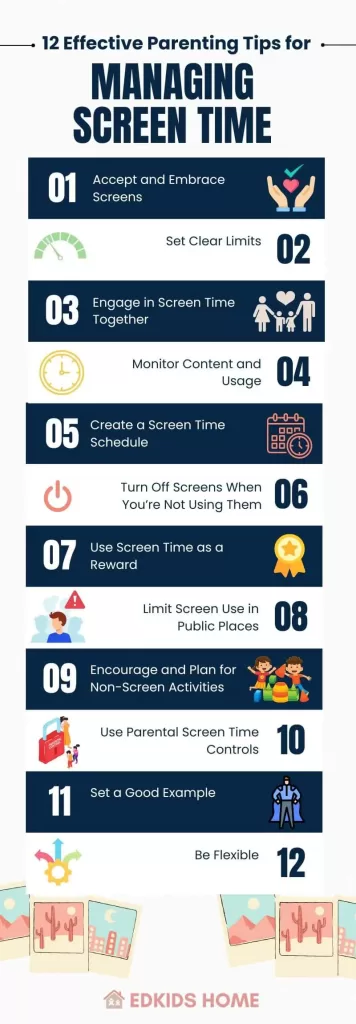
Managing screen time is super important in today's digital age, especially for kids. Too much screen time can influence sleep, schoolwork, and how they get along with others. On the flip side, screen time can help kids learn a ton with fun educational stuff and interactive tools. It's up to us parents to figure out how to balance the good and bad of screens.
Ever since my first born arrived, figuring out the screen time thing has been a huge learning curve. Initially, I was super strict about not letting them see any screens at all. I thought it was the best way to go. But as time went on, I started seeing the benefits that screens could offer. Educational apps helped with learning new words, and videos could sometimes explain complex stuff in a way that clicked with them. That's when I began seeking that balance, trying to find the right path to mix the good parts of screen time with healthy limits. It's been a process of trial and error, but I'm learning more about how to make technology work for us, not against us.
How Screen Time Affects Child Development?

Screen time has become a crucial aspect of modern parenting, and it's important to understand how it can affect child development.
Studies have shown that excessive screen time can lead young children to issues such as:
- decreased attention span
- poor social skills
- delayed language development
- disrupted sleep patterns
Excessive screen time may inhibit a child’s ability to observe and experience the typical everyday activities they need to engage with in order to learn about the world, leading to a kind of “tunnel vision,” which can be detrimental to overall development
Health Matters
However, with proper moderation and guidance, screens can also offer important benefits:
- educational opportunities
- exposure to new ideas and perspectives
- entertainment and relaxation
- improved hand-eye coordination
It all comes down to balance. While screen time should be limited, it doesn't have to be completely avoided. In fact, using screens in a purpose
On the other hand, limited screen time can have positive effects on child development. It can improve cognitive abilities, increase vocabulary, and promote creative thinking. The key is finding the right balance and using screens in a purposeful and intentional way.
Finding the Right Balance
As a parent, finding the right balance for your child's screen time can be challenging. Every family and child is different, so there is no one-size-fits-all approach. It's important to consider factors such as age, developmental stage, and individual needs when setting limits.
Some helpful tips for finding the right balance include:
- Setting clear rules and boundaries
- Engaging in screen time together with your child
- Monitoring the content your child is consuming
- Encouraging a balance of screen time with other activities such as outdoor play, reading, and creative play
It's important to also model healthy habits for your child by limiting your own screen time and showing them alternative ways to spend their time. With consistent guidance and moderation, screens can be a valuable tool for your child's growth and development. So don't be afraid to embrace technology, just make sure it's being used in a responsible and balanced manner.
What is a Healthy Screen Time for a Child?
The American Academy of Pediatrics recommends no more than one hour per day of high-quality programming for children ages 2-5 and limiting screen time for children over the age of 6. However, this guideline may vary depending on individual circumstances and needs.
12 Strategies for Effective Screen Time Management for Parents

1. Accept and Embrace Screens
Screens are here to stay, so see them as tools that enhance your children’s lives. Discover how to use screens to boost your children's academic performance, foster openness to new experiences, and enhance connections with family and friends.
2. Set Clear Limits

Setting clear limits on screen time is essential to help children develop healthy habits and ensure they engage in a variety of activities.
Here are some ideas you and your family can try:
- Use a timer or set alarms to indicate when it's time to turn off screens
- Create a screen-free zone in your home, such as the dinner table or bedrooms
- Have designated days for screen-free activities
- No screens during mealtimes
- No screens before bedtime
3. Engage in Screen Time Together

Instead of treating screen time as a solitary activity, try engaging in it together with your child. This can include co-viewing or playing games together, which encourages social interaction and bonding while also monitoring the content being consumed.
Story: I don't like watching cartoons with my kids. So, I'll look for family-friendly movies or shows we can enjoy together when we have time.
4. Create a Screen Time Schedule

Having a set schedule for screen time can help children understand when it is appropriate and expected. This can also prevent arguments or negotiations about screen time.
Tip: When your child is playing a game, it's better to wait until they finish that cycle of the game instead of asking them to stop right in the middle.
Check out our Weekly Planner to guide you and your kids in setting a screen time schedule.
5. Monitor Content and Usage
It's important to know what your child is watching, playing, or doing on screens. Regularly check their viewing history, game records, and social media accounts to make sure they are not exposed to inappropriate content or engaging in unhealthy online habits.
I have regular conversations with my kids about what they are watching and playing, and I also use parental controls to limit their screen time and access to certain websites or apps. It's important to regularly review and update these settings as your child grows and their interests change.
6. Turn Off Screens When You're Not Using Them.
When screens are not in use, turn them off or put them away to reduce temptation and distractions. This applies to both children and adults. It's important for parents to model healthy screen habits for their children.
Make a habit of turning off all screens during meals, family activities, and before bedtime. This not only reduces screen time but also allows for more meaningful interactions and quality time with each other.
7. Use Screen Time as a Reward

Instead of using screens as a default activity, use them as a reward for completing chores or good behavior. This encourages children to earn their screen time and teaches them the value of responsible usage.
It's also important to set limits on how much screen time can be earned and to encourage other activities like reading, playing outside, or spending time with friends and family.
We have a daily schedule to help my kids understand when they can use screens. It coincides with my time for cooking, when they also complete their homework, take a shower/bath, set the table, and so on.
Check out our free reward chart to get your kids started!
8. Limit Screen Use in Public Places
When kids spend too much time on screens outside, they miss out on real connections and adventures. This affects their social growth, reducing opportunities for chats and face-to-face interactions. It can also decrease their appreciation for nature, lowering interest in vital outdoor play for physical well-being.
Setting boundaries on screen use in public places like restaurants, stores, or others' homes is crucial. This helps your child learn self-control and respect for others, while preventing excessive screen exposure.
Restaurants
When we go out to eat, I try to avoid screens as a last resort.
First, we look at the menu together and ask the kids what they want. I let them relax until they show signs of boredom and want to play. That's when I bring out an “activity bag” with toys, crayons, and activity books to keep them entertained.
Once the food arrives, we put away the activities. My kids usually behave well for about 1.5 hours without screens.
If they get restless and we're still at the restaurant (usually with friends if it's taking a while), then I use my phone to keep them entertained.
Check out our free printables to get your kids occupied.
Car Rides

Long car rides can be tough, especially if the kids get bored and restless. Instead of just using screens for entertainment, suggest they gaze out the window, listen to music, podcasts, or audiobooks, or enjoy a snack. This helps reduce screen time while boosting creativity and imagination.
“Being bored is often the first step toward great creativity and imagination. Without screens, the mind is free to wander and invent.”
9. Encourage and Plan for Non-Screen Activities

Screens should not be the only source of entertainment for children. Encourage children to engage in non-screen activities such as reading, playing outdoors, or spending quality time with family and friends.
10. Use Parental Screen Time Controls
There are various parental control options available for devices and apps, allowing you to set limits on screen time and monitor your child's usage. Take advantage of these tools to help manage their screen time in a way that works for your family.
11. Set a Good Example
Remember, children learn by example. So if you want them to have a healthy relationship with screens, it's important to model that behavior yourself. Make sure you limit your own screen time and prioritize quality family time without screens.
Disable unnecessary notifications
Constant notifications can be distracting and lead to more screen time. Disable unnecessary notifications to minimize distractions.
I think this is the most essential advice, and it's tough for me. But I'm ready to make changes for the better of our family. We all aim to use technology to enhance our lives without getting hooked on it. That's why showing a good example is crucial.
12. Be Flexible
Finally, it is important to stay flexible because every child is different. Adjust rules and limits according to your child's needs and age. It might take some time and trial to find the best screen routine for your family.
Last Thing About Screen Time for Kids

Here are the 12 essential tips for managing screen time as parents:
Remember, it's not about completely eliminating screens from our lives, but rather finding a healthy balance that works for each individual and family. And by encouraging creativity, physical activity, and setting limits, we can help our children develop a positive relationship with screens. So let's take the first step towards a healthier lifestyle today! Let's put down our screens and pick up new hobbies, spend time outdoors, and connect with our loved ones in person. Our children will thank us for




